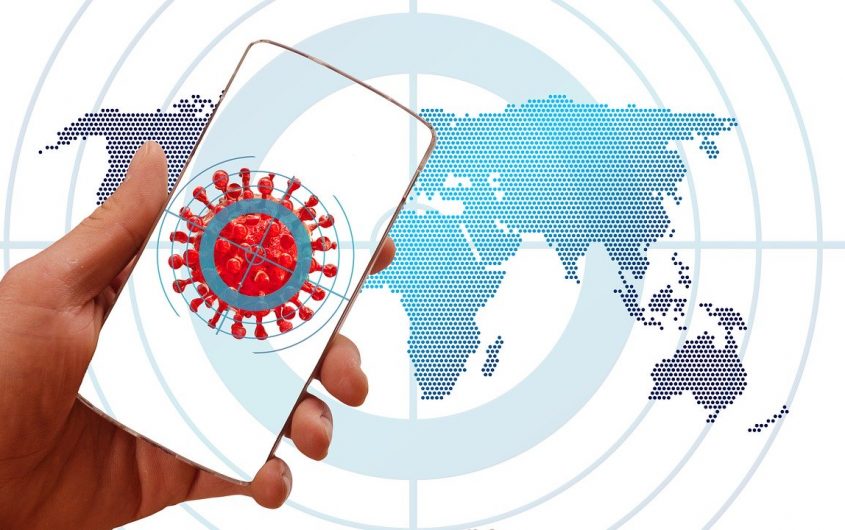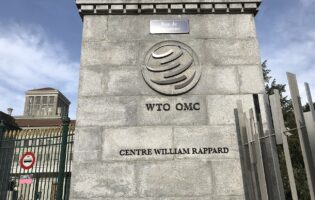
Gerd Altmann from Pixabay
Fight the COVID-19 Pandemic with Innovative Democratic Surveillance

Yixiang Xu
China Fellow; Program Officer, Geoeconomics
Yixiang Xu is the China Fellow and Program Officer, Geoeconomics at AGI, leading the Institute’s work on U.S. and German relations with China. He has written extensively on Sino-EU and Sino-German relations, transatlantic cooperation on China policy, Sino-U.S. great power competition, China's Belt-and-Road Initiative and its implications for Germany and the U.S., Chinese engagement in Central and Eastern Europe, foreign investment screening, EU and U.S. strategies for global infrastructure investment, 5G supply chain and infrastructure security, and the future of Artificial Intelligence. His written contributions have been published by institutes including The Chinese Academy of Social Sciences, The United States Institute of Peace, and The Asia Society's Center for U.S.-China Relations. He has spoken on China's role in transatlantic relations at various seminars and international conferences in China, Germany, and the U.S.
Mr. Xu received his MA in International Political Economy from The Josef Korbel School of International Studies at The University of Denver and his BA in Linguistics and Classics from The University of Pittsburgh. He is an alumnus of the Bucerius Summer School on Global Governance, the Global Bridges European-American Young Leaders Conference, and the Brussels Forum's Young Professionals Summit. Mr. Xu also studied in China, Germany, Israel, Italy, and the UK and speaks Mandarin Chinese, German, and Russian.
__
Governments around the world are increasingly embracing the idea of digital contact tracing to detect infections and facilitate quarantine in the global fight against the COVID-19 pandemic. Initially skeptical of sweeping digital surveillance measures adopted by China and a number of other Asian countries, politicians in Europe and the U.S. have found themselves severely constrained by a lack of medical supplies and difficulty in enforcing social distancing policies.
Traditional measures of detection and tracing take time for states and individual local health departments to collect, compile, and upload data, creating a delay in timely analysis and response. Limited manpower prevents governments from mapping as wide a network of data points as possible for improving targeted alerts or detections. Even as numbers of new cases start to decline, governments want new tools to mitigate risks of a new wave of infections while they attempt to resume economic activities.
Patriot Act 2.0 or Surveillance à la China?
Many people are concerned that newly introduced surveillance tools would persist after the current public health crisis, much like the U.S. PATRIOT Act which, through multiple extensions, continues to grant intelligence and law enforcement agencies access to high-powered surveillance systems. Tracking entire populations to combat the pandemic could open the door for more invasive government surveillance later, and on a much greater scale. When the crisis is over, who can promise that we will not become a surveillance society?
Our imagination over the intrusiveness of an effective surveillance strategy for tracing infections has inevitably been conditioned by early Chinese efforts to employ its vast domestic surveillance capability. The Chinese government uses geolocation and public transportation data to trace contacts; local law enforcement deploys drones and facial recognition tools to enforce quarantine; and citizens are required to use QR health codes on smartphones that determine their freedom of movement.
The truth is, despite the extensive domestic surveillance network the Chinese government assembled in the past decade and the aggressive digital measures Beijing undertook to combat the pandemic, China did not emerge from the crisis as a total surveillance dystopia. The Chinese approach is neither very sophisticated nor decisively effective. There’s no single government repository of all data and government departments and provincial and local governments have a history of not sharing data with each other. Individuals’ medical data that power the mandatory AI-enabled health codes in many Chinese cities come from simple online questionnaires, and not the state’s fragmented public health system. Chinese citizens are deeply frustrated by the AI solution’s frequent changing whims, their codes flickering between green and red without explanation.
Whether our societies would become surveillance democracies is not conditional upon the existence of surveillance capabilities, but how we put them to use.
Our solutions don’t have to look like that. Possessing new surveillance capacity doesn’t automatically spell the demise of individual rights or privacy. Whether our societies would become surveillance democracies is not conditional upon the existence of surveillance capabilities, but how we put them to use. As Yale law professor Jack Balkin puts it “the question is not whether we will have a surveillance state in the years to come, but what sort of state we will have.”
The technology gives governments vast snooping powers and great degree of operational freedom. But human decision-makers must always be in charge. And as long as individuals are accountable for making the call on how to gather and what to do with the information, there are ways to erect safeguards against abuse. One of the great things about democracy is that transparency and accountability under the rule of law provide meaningful ways to check government power.
Building Innovative, Democratic Solutions
We can make a data-driven approach to pandemic response compatible with individual rights and civil liberties if we continually and rigorously demand limits and justifications to prevent governments from becoming information gluttons and information misers.
Public health officials and experts should decide what kind of data is necessary to ensure that governments only collect information that is actually useful and necessary. Data collected for COVID-19 purposes should have a clear expiration date and access to it needs to be strongly restricted.
We should push for contact tracing apps to be transparent about their technical specificities. Demonstrating and explaining how these apps work and what exactly goes on in the background in simple terms could boost public confidence, encourage their adoption, and allow both government officials and the public to evaluate their effectiveness and impact on privacy.
Demonstrating and explaining how these apps work and what exactly goes on in the background in simple terms could boost public confidence, encourage their adoption, and allow both government officials and the public to evaluate their effectiveness and impact on privacy.
As some states in the U.S. and countries in Europe coordinate regional plans to resume normal activities, they should focus on creating harmonized tools that minimize bureaucratic burden and optimize regional data sharing. Examples of these innovative solutions are emerging, particularly from the privacy-conscious Europe.
The EU has called for a single European tracing app to combat the pandemic. Its data protection watchdog, the European Data Protection Supervisor, is currently examining measures that would ensure compliance to the bloc’s strict data protection rules, anonymize data that fall out of the scope of current privacy regulations, ensure that data obtained will be deleted as soon as the current health crisis ends, and secure servers that house sensitive health data.
The PEPP-PT, Pan-European Privacy-Preserving Proximity Tracing, a COVID tracking app developed by researchers from eight European countries, including Germany’s Fraunhofer Heinrich Hertz Institute, utilizes Bluetooth short-range communications to provide a more accurate and less intrusive way of logging personal contacts that preserves user privacy.
Governments should also consider partnership with large private sector players who often have access to more and better-quality consumer data. In the United States, federal initiatives to enhance COVID tracing has sought to draw on detailed information collected from multiple private-sector databases. U.S. tech giants Apple and Google have formed an alliance to embed a tracking feature in their mobile operating systems, iOS and Android. The combined effort could reach an estimated 72 percent of U.S. consumers who own a smartphone and could open the door to streamlined data exchange among healthcare entities.
While public-private partnerships are instrumental in creating timely and cost-effective data collection solutions, such decentralized approaches need to be accompanied by vigilant legislative efforts to create or update consumer rights laws to guard against abuse by both private companies and governments.








